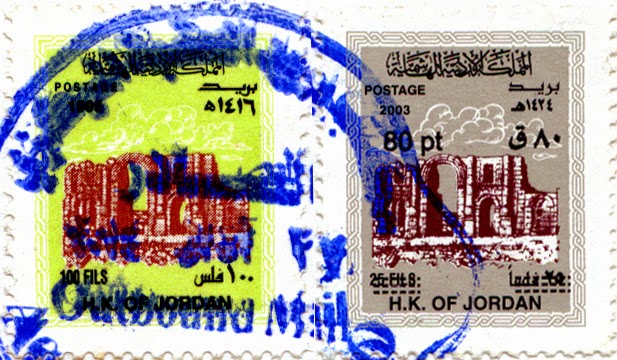June 21, 2014
0535, 554, 1109 JORDAN - Petra (UNESCO WHS)
Posted on 02.03.2013, 15.03.2013, and 21.06.2014
"...from the rock as if by magic grown, / eternal, silent, beautiful, alone!", as described it John William Burgon in a poem from 1845, Petra is undoubtedly one of the most amazing cities ever raised on this planet. (Re)discovered by Europeans 200 years ago, after a millennium of oblivion, this city lies on the slope of Mount Hor, in the large valley running from the Dead Sea to the Gulf of Aqaba, today in Jordania. Pliny the Elder and other writers identify Petra as the capital of the Nabataeans (ancient Arabs of North Arabia) and the center of their caravan trade, controlling the main commercial routes which passed through it to Gaza in the west, to Damascus in the north, to Leuce Come on the Red Sea, and across the desert to the Persian Gulf. Came into prominence in the late first century BC, Petra continued to be a prosperous city 150 years after the Roman conquest (106), even if the native dynasty came to an end, but after that, probably because Palmyra attracted the Arabian trade, it gradually declined in importance, and ended by being completely deserted.
Nabataeans ability to control the water supply and also the flash floods, using dams, cisterns and water conduits, allowed them to create an artificial oasis and to build a city in the midle of the desert, simply carved into the rock, as the name implies (Petra means stone in Greek). The eastern entrance leads steeply down through a narrow gorge (in places only 3-4m wide) called the Siq (the shaft), which served as a waterway flowing into Wadi Musa. At the end of it stands Petra's most elaborate ruin, Al Khazneh (popularly known as the Treasury - in the first postcard), hewn into the sandstone cliff. A little further, at the foot of the en-Nejr mountain, is a massive theatre. At the point where the valley opens out into the plain, the site of the city is revealed with striking effect. The amphitheatre has been cut into the hillside and into several of the tombs during its construction.
The Monastery (in the second and the third postcard), Petra's largest monument, dates from the 1st century BC. It was dedicated to Obodas I and is believed to be the symposium of Obodas the god. This information is inscribed on the ruins of the Monastery (the name is the translation of the Arabic "Ad Deir"). It is similar as design with the Treasury, but is much larger and much less decorated. The flat plaza in front was carved out of the rock, perhaps to accommodate crowds at religious ceremonies, and was originally surrounded by a colonnade. The interior consists of a single room with double staircases leading up to a niche.
About the stamps
On the first postcard
The first stamp is part of a series dedicated to Environmental Protection, issued on 2009. The four stamps of the series are:
• Tree, shrub, flower (20 pt)
• Man and fire (30 pt)
• Animals grazing (40 pt) - it's on this postcard
• Litter in stream (50 pt)
The second stamp belongs to the series Mosques in Jordan, issued on 2010 and containing five stamps:
Jordan University Mosque (10 pt)
• Abu Darwish Mosque (20 pt)
• Al-Hussainy Mosque (30 pt)
• King Abdullah Mosque (40 pt) - it's on this postcard
• King Hussein Bin Talal Mosque (50 pt)
On the second postcard
This postcard was sent from Switzerland, so it has stamps from this country. The first stamp, issued in 2001, is dedicated to Museo Vela, opened in Ligornetto in 1898, a few years after the death of Swiss sculptor Vincenzo Vela. The second, issued in 2000, depict a snow glob with a Saint Bernard dog inside.
On the third postcard
Both stamps are part of a large series of definitive stamps, Triumphal Architecture, Jerash, issued along the time (the first one in 1996, the second in 2003). The second is a special one, because it is overprinted. The initial face value (25 fils) was strikethrough and on the top of the stamp was overprinted the new value, 80 piastres.
References
Petra - Wikipedia
Petra - UNESCO official website
History of Petra - Sacred Destinations
The Monastery, Petra - Sacred Destinations
Sender 1: Mervat Salman (direct swap)
sent from Amman (Jordan), on 19.01.2013
Sender 2: Zasa Lein (direct swap)
sent from Bern (Switzerland), on 04.03.2013
Sender 3: Marius Vasilescu
sent from Aqaba (Aqaba / Jordan), on 23.03.2014
Locaţia:
Petra, Jordan
Subscribe to:
Post Comments (Atom)







No comments:
Post a Comment